Kato's Journey: From Abuse to Rescue and Recovery
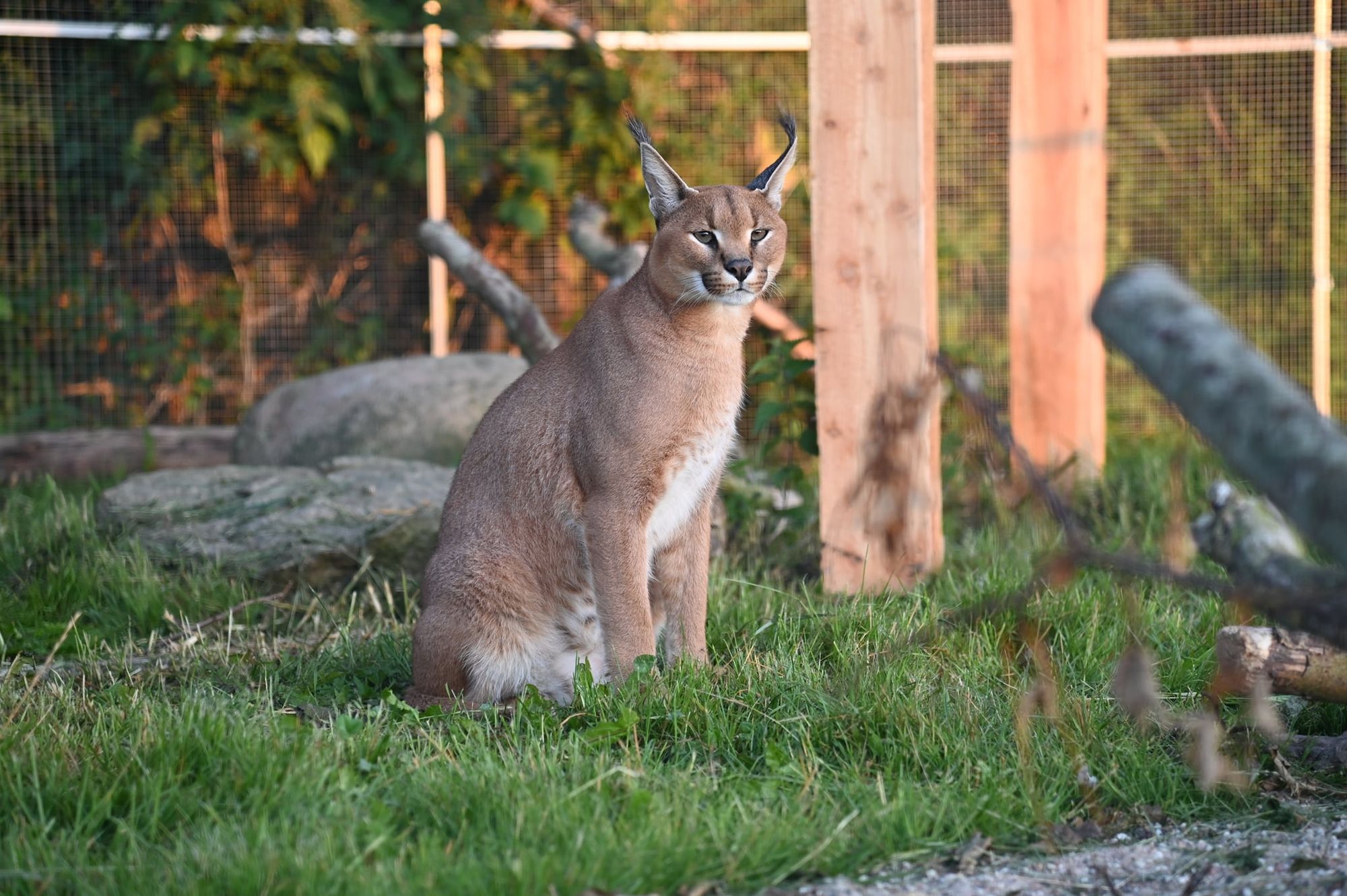
Kato's Second Chance:
It's been a transformative journey for Kato, a Caracal rescued from a violent existence in France, now thriving at Odsherred Zoo Rescue in Denmark. Kato's story is a testament to the resilient spirit of animals, having suffered as an illicit pet before landing in a transit spot in Belgium and finally coming to our Danish rescue zoo.
This is the first picture we got of Kato from Belgium in the transit rescue place:
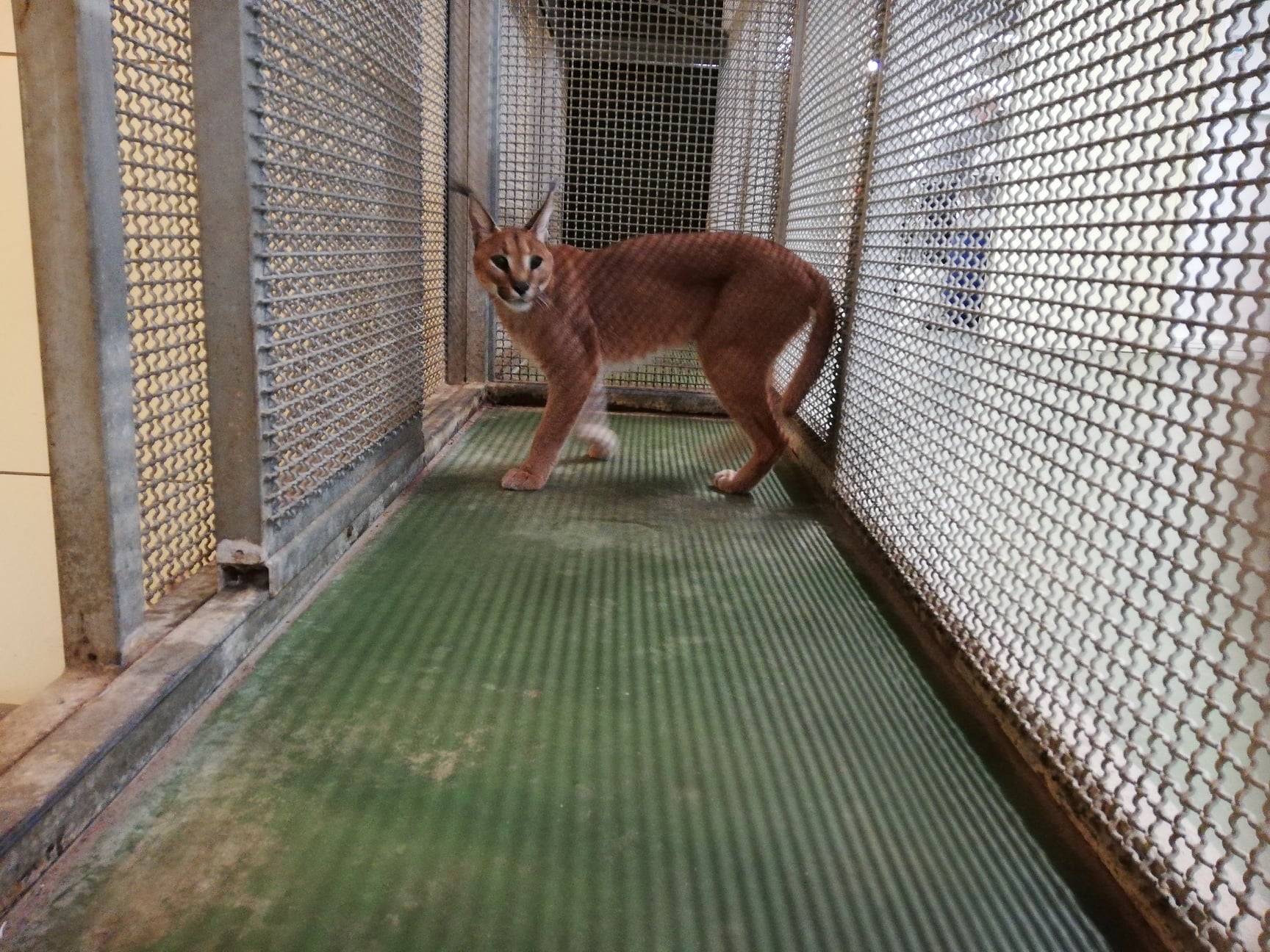
This is when Kato arrived here at the rescue zoo:
At Odsherred Zoo Rescue, we strive to provide our animals with the best environment possible, and Kato was no exception. We embarked on the construction of a new enclosure for him, an initiative funded mostly by the generosity of our supporters. Despite having limited resources, we always find the means to help new animals in need who constantly come to the rescue zoo.
Kato's arrival at our rescue zoo was sudden. Before our funding could be fully in place, we were called to action. Yet, we managed to finalize the construction of his new enclosure, all thanks to those who contributed to Kato's cause. The last remaining task is to add more climbing spots in the enclosure, and we are working on it.
In the midst of all the chaos and construction, Kato displayed extraordinary calmness. As we pushed on with the development of his enclosure, Kato began showing signs of comfort and trust toward us. We were thrilled to witness the progress Kato has made from day one, even though he had been through so much.
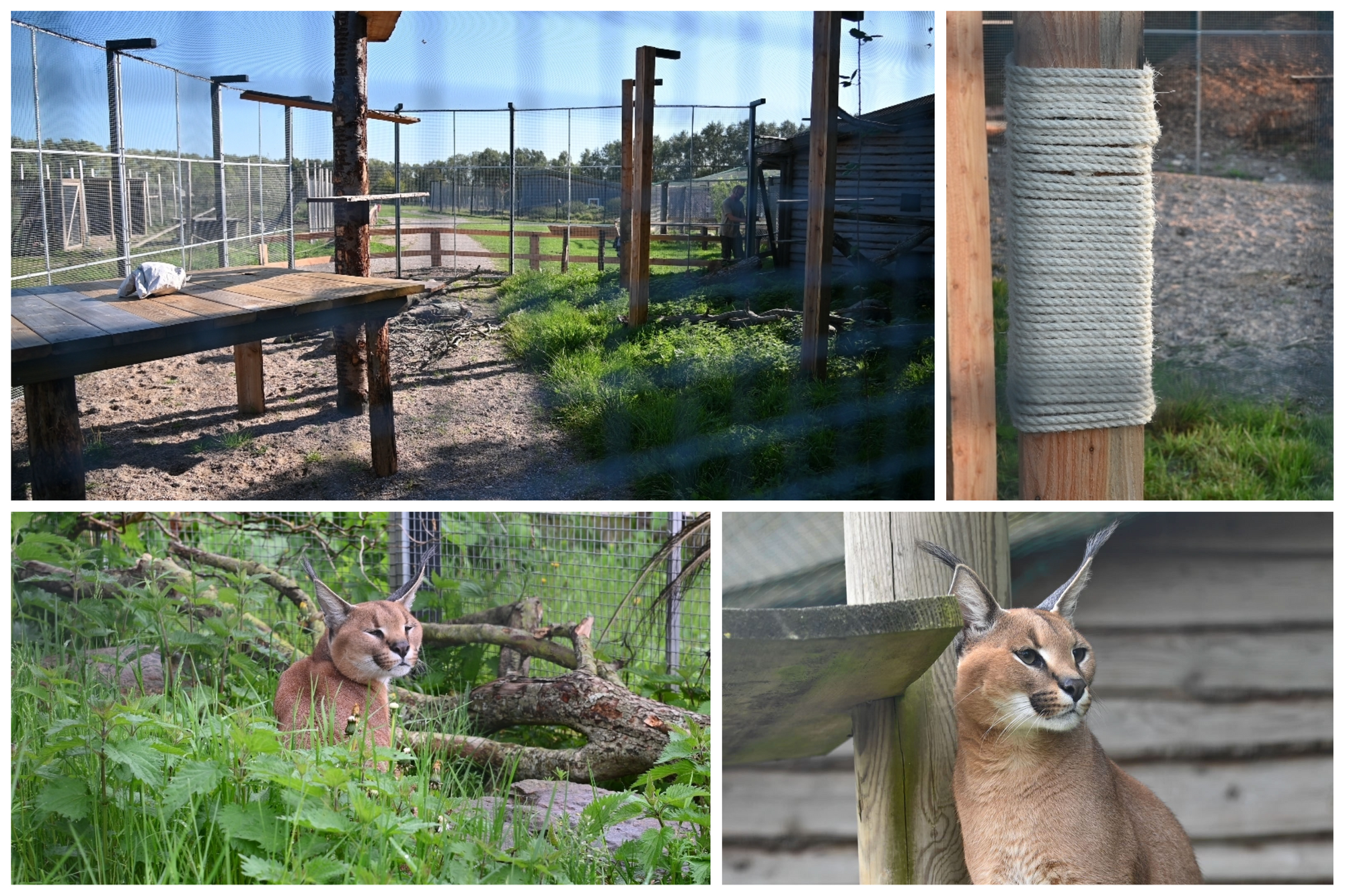
This is his first season with us after the tumultuous journey, and the sudden exposure to a spacious outdoor enclosure and the many sounds and smells of the rescue zoo was very new to him. Initially, Kato would retreat into his shelter when the sounds of the rescue got overwhelming. However, with time and patience, Kato started adapting to his new environment, the sounds, smells, and visitors who frequent the rescue zoo. Today, nothing can scare the handsome caracal, and we can actually see that he quite enjoys the company when people visit the rescue center.
Beyond the basics of food, shelter, and medical care, there's another aspect that we've been focusing on for Kato's well-being - enrichment activities. These activities aim to stimulate the animals' natural instincts and provide both physical and mental stimulation. One of the unique enrichment activities we designed for Kato involves a simple paper bag filled with various items - a bit of meat, some hay, and a special ingredient: camel fur. The camel fur, rich with unique scents and oils, comes from our resident camel who naturally sheds its fur once a year.
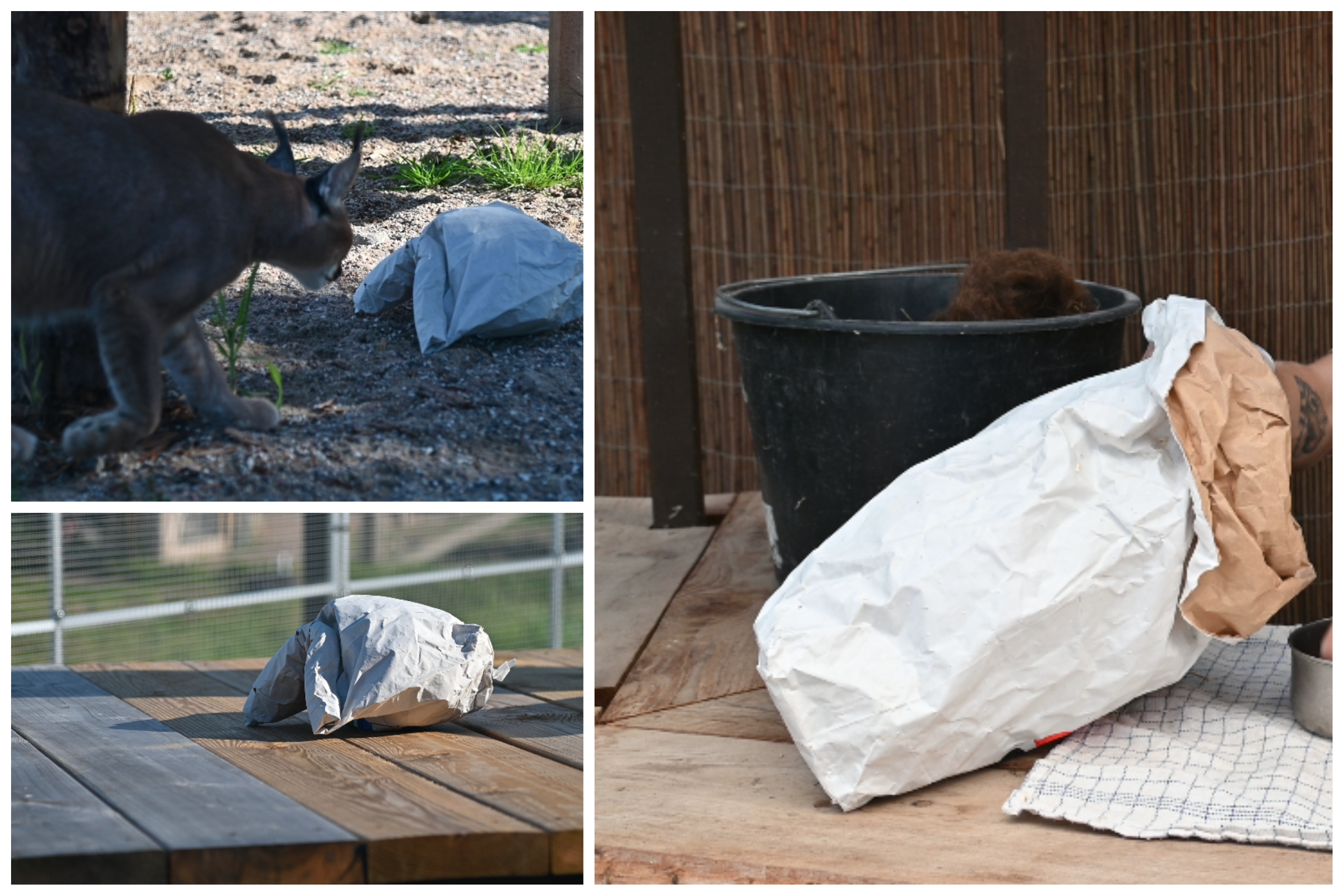
Presenting Kato with this 'mystery bag' triggers his curiosity and engages his natural instincts, providing him with both physical exercise and mental stimulation. Seeing him interact with this enrichment tool is a testament to how these activities can enhance the well-being of animals in rescue centers.
Kato's story is not an isolated one. At Odsherred Zoo Rescue, we frequently encounter animals forcibly removed from adverse conditions, animals subjected to medical experiments, or animals like Kato, who have suffered as illegal pets.
Like the 14-week-old Caracal kitten, left at our parking lot: Read the story: https://www.playrescue.com/my-journey-with-an-unexpected-guest-a-caracal-kittens-tale-at-odsherreds-rescue-zoo/
These experiences constantly push us to work harder for the animals. We believe it's a shared responsibility to take care of the animals in need.
Facts about the Caracal:
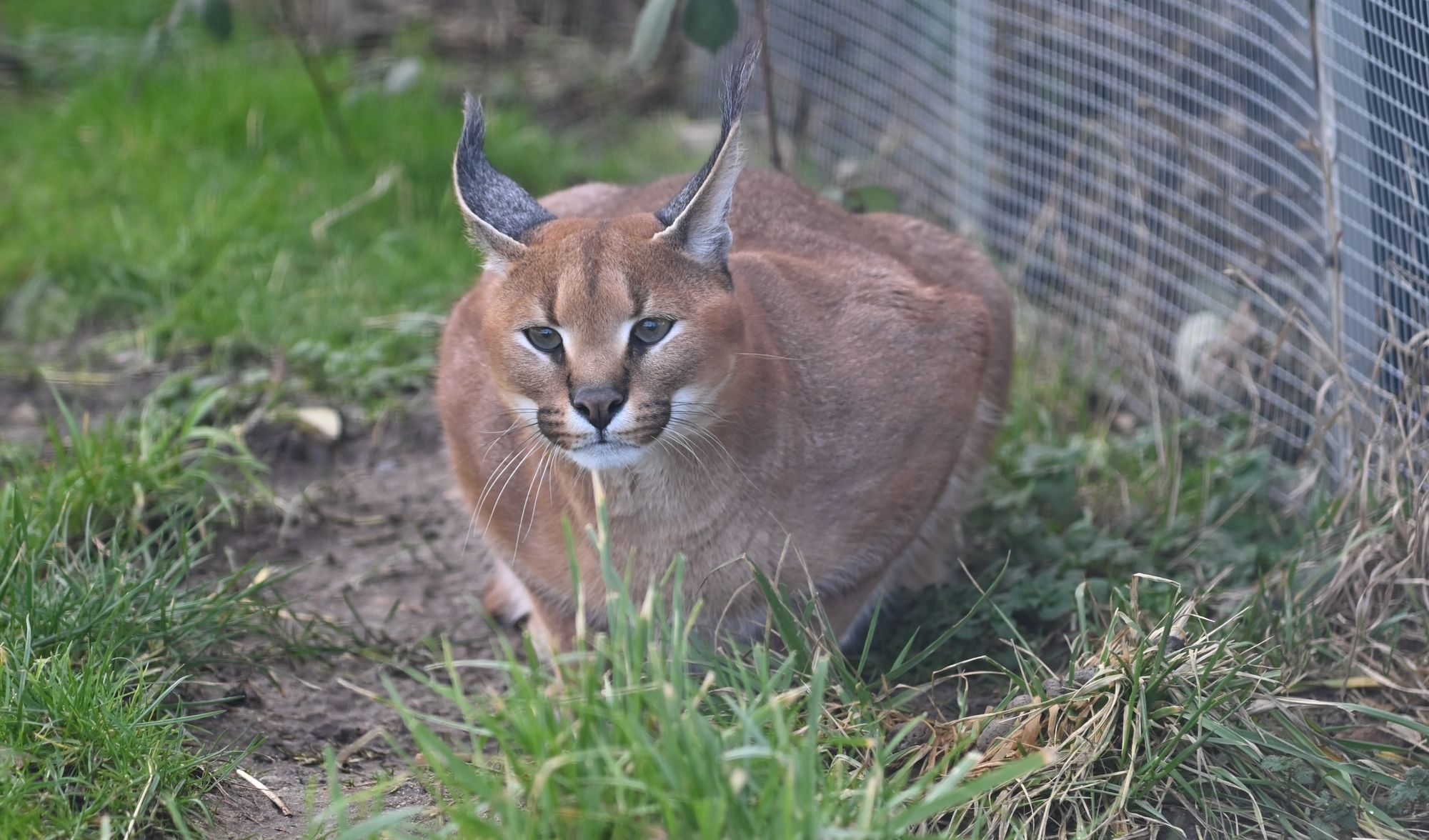
Caracals: An Insight into Their Life and Habits
Caracals, also known as desert lynx or bird catchers, are a fascinating species in the cat family. Native to Africa, the Middle East, and reaching as far as India, caracals are well adapted to various environments such as savannas, dry steppes, and semi-deserts.
Standing at a shoulder height of 40-50 cm and weighing between 10-20 kg, caracals are medium-sized cats. They have a slender body, long legs, and a short tail. Remarkably, their hind legs are longer than the front ones. Their fur is short, reddish-brown in color with a white underbelly. The black tufts on their ears are a distinctive feature. These tufts not only keep flies away from their face but also serve as a means of communication when they flick them.
Caracals are extraordinary bird hunters and can leap up to 3 meters into the air to catch birds in flight. This ability is so well recognized that in Iran and India, tame caracals are used for hunting, and competitions are held to see how many birds they can take down in a specific time.
The caracals are mostly nocturnal and their diet includes small rodents, rock hyraxes, small antelopes, and birds. They have a strong paw strike that they use to take down their prey.
Caracals are territorial animals, marking their territories with urine. Males and females maintain separate territories, coming together only during mating seasons. Females prepare their nesting dens in abandoned earth burrows and rock crevices, where they give birth to 2-4 cubs after a gestation period of approximately 2.5 months.
Unfortunately, the caracal population has sharply declined in North and South Africa and parts of Asia, and the species is now considered threatened throughout its distribution range. These beautiful creatures are a sight to behold, and their survival is crucial for maintaining the balance in their native ecosystems. At Odsherred Zoo Rescue, our goal is to contribute to their conservation and provide animals like Kato, our resident caracal, a safe haven to thrive in.
